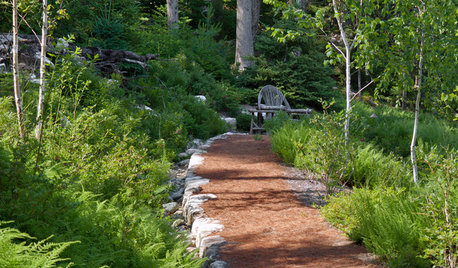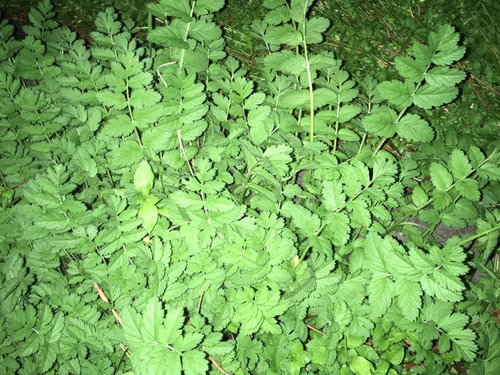ID this broadleaf weed?
DandyLioness (CA 9, SZ 14)
8 years ago
Featured Answer
Sort by:Oldest
Comments (20)
DandyLioness (CA 9, SZ 14)
8 years agoEmbothrium
8 years agoRelated Discussions
Need help with broadleaf weed id
Comments (4)Sorry, my photo didn't upload. Here it is....See MoreReel mower + broadleaf weed lawn?
Comments (5)Boiling water kills weeds in my driveway, but it's more difficult in the grass as you don't want to kill the grass, too. You'll probably have to hand dig to remove the weeds, but it's easier after a soaking rain. This time of year might be difficult. A weed hound grips the weed firmly to remove the deep taproot, but the side of your palm gets sore even with gloves. One spring years ago I paid my 8 year old son per dandelion to finish up the last 100 or so left in the lawn. He eagerly prowled the grass after school & earned a good amount of $ because there were many hundreds still there. After you remove the weeds you'll need to spread grass seed, but it's easier in September after the rains come again. The weeds come back if you don't fill the space with something else. We've reduced the size of our lawns and created smooth curves for easy mowing, so is isn't hard to keep up. In fact our teen son mows the front in 7 minutes. I know because he timed himself to prove it's not too much lawn because he wanted us to keep enough turf for lawn games like croquet & bocce ball. On hot days it's nice to lay a blanket on the cool grass in the shade whereas it's not comfy to lay a blanket on wood chip or rocky paths or pavers. Plus the plentiful clippings in spring are useful in gardens as mulch once dried. Here is a link that might be useful: weed hound...See MoreOrganic broadleaf weed control.... The day has arrived
Comments (11)So..... I sprayed the weeds with the directed mixture and within 2 days, the foliage has turned black and the weeds appear to be dying. I tried spraying weeds ranging from little seedlings, to a cluster of Canada Thistle. Zappo! The biggest downside is the cost. $140 for the tub. Makes 25 gallons. Definitely a spot spray or broadcast in a small area....See MoreBroadleaf winter annual weed identification
Comments (2)Where in the world are you? Have you asked the people at the local office of your state universities Cooperative Extension Service?...See MoreDandyLioness (CA 9, SZ 14)
8 years agoUser
8 years agodchall_san_antonio
8 years agoDandyLioness (CA 9, SZ 14)
8 years agoUser
8 years agoDandyLioness (CA 9, SZ 14)
8 years agoUser
8 years agodchall_san_antonio
8 years agoUser
8 years agoDandyLioness (CA 9, SZ 14)
8 years agodchall_san_antonio
8 years agolast modified: 8 years agoUser
8 years agoowlnsr
8 years agodchall_san_antonio
8 years agoDandyLioness (CA 9, SZ 14)
8 years agoUser
8 years agoUser
8 years ago
Related Stories

GARDENING GUIDES5 Weed-Smothering Ground Covers
Let these landscape plants do the dirty work of choking out weeds while you sit back and enjoy the view
Full Story
GARDENING GUIDESWeed War: When and How to Use Chemical Herbicides
Before you spray, arm yourself with knowledge about which weed killers — natural or synthetic — are right for your yard
Full Story
GARDENING GUIDES5 Things to Know About Weeding and Mulching Your Native Garden
What’s the best time to pull weeds? How thick should the mulch be? Here’s the scoop for a healthy landscape
Full Story
GARDENING GUIDES5 Ways to Naturally Win the Weed War
Show irksome weeds no mercy with these tricks for combating them sans chemicals
Full Story
HOUZZ TOURSHouzz Tour: From Overgrown Weeds to Picturesque Farmhouse Expanse
This once-neglected 100-acre South Carolina site now features a lake, a wood-filled farmhouse and a far-reaching view
Full Story
GARDENING FOR BUTTERFLIES3 Ways Native Plants Make Gardening So Much Better
You probably know about the lower maintenance. But native plants' other benefits go far beyond a little less watering and weeding
Full Story
GARDENING GUIDESGreat Design Plant: Milkweed
Quit cringing. This not-weed plant is a sight to behold in the garden, has a delicious vanilla scent and is a magnet for butterflies
Full Story
GARDENING GUIDES7 Ecofriendly Gardening Ideas That Also Cut Chore Time
Spend less time weeding, less money watering and more moments just sitting back and enjoying your healthy garden
Full Story
INSPIRING GARDENSFrom Concrete Lot to Gracious Organic Garden in Seattle
Plants, pests and even weeds have a place in this landscape, which offers an edible bounty and a feast for the eyes
Full Story
DECORATING GUIDESDandelions Pop Up in Home Décor
Creative wall treatments, textiles and lights are elevating the embattled weed to art
Full Story






dchall_san_antonio